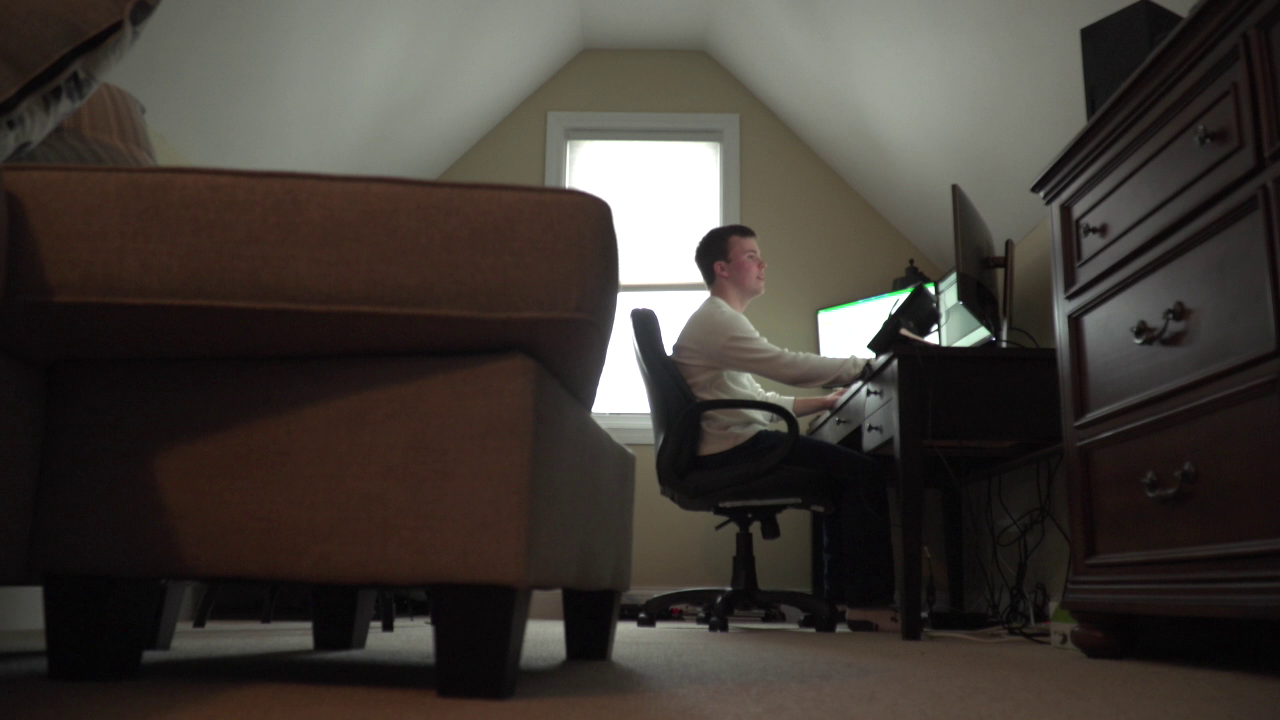The Central Coast certainly is paradise and living here is the dream of many. But it also comes at a cost -- a very expensive one. In this Price of Paradise segment, KSBY's Nina Lozano took a closer look at how pandemic-fueled remote work changes can affect people's budgets and what employees need to consider when choosing an ideal work setup.
WORKING FROM HOME DURING THE COVID-19 PANDEMIC
Like millions of other Americans, Michelle Karpovich and her husband were able to work from home during the COVID-19 pandemic.
It allowed them to relocate from the Bay Area to the Central Coast and be closer to family. "This place was just so beautiful. Nice weather so it was just the perfect fit."
Karpovich got a different job. She's now working part-time with the City of San Luis Obispo. She's still working from home due to COVID concerns. "There's a lot of flexibility in terms of schedule mainly because there's no commute time so my day starts a little later and ends a little earlier."
Plus, she saves money on gas.
1 IN 4 MILLION AMERICANS IS WORKING REMOTELY
The pandemic has changed the way companies do business.
According to Global Workplace Analytics -- one in four Americans is working remotely.
Wendi Patterson of United Staffing Associates has seen an increase in the number of people wanting to work from their home office. She also estimates more than half of job seekers they interview prefer it. "There are some people that are from out of the area that are used to working in a remote environment and they still want that."
Remote work can be a win for employees and employers. Multiple surveys and studiesfound workers have higher job satisfaction and companies save money on operating costs.
But are remote employees taking on some of those expenses? it depends who you ask and where they work.
THE COSTS OF REMOTE WORK
On average, remote workers have seen a $40 - $50 monthly increase in their energy bills or as much as $600 dollars a year. While some are able to absorb the costs, others may not have the money to spare.
Under federal law, businesses are only required to reimburse for work-related expenses if those expenses lower an employee's pay to below minimum wage.
However, California is one of at least 10 states and Washington D.C. where employees get reimbursed for certain remote work expenses. Other states with reimbursement laws include Illinois, Massachusetts, Montana, Pennsylvania, New York, New Hampshire, North Dakota, South Dakota, and Iowa.
There isn't really a set standard on how to handle remote work. every company is different, and many variables come into play.
"A lot of customers (employers, businesses) they ship equipment. There are other customers that reimburse the employees to use their own equipment," explains Patterson.
More than half, or 51% of remote workers spent between $100 and $499 on equipment or furniture; 61% of them paid for it on their own.
But there are other costs to consider when working from home — the mental, emotional and social toll it can take.
An American Psychiatric Association surveyfound a majority of employees working from home experienced isolation, loneliness, and difficulty getting away from work.
"You do miss out on in-person collaboration connection with coworkers," says Karpovich.
THE HYBRID WORK MODEL
Karpovich prefers a hybrid approach: a combination of working remotely and from an office.
"Having a breakup of a schedule where you're in office... You can collaborate with people in person and then remote, just because of the flexibility."
For those who prefer the hybrid approach, Global Workplace Analytics estimate 25% - 30% of the U.S. workforce will be working from home one or more days a week after the pandemic.




